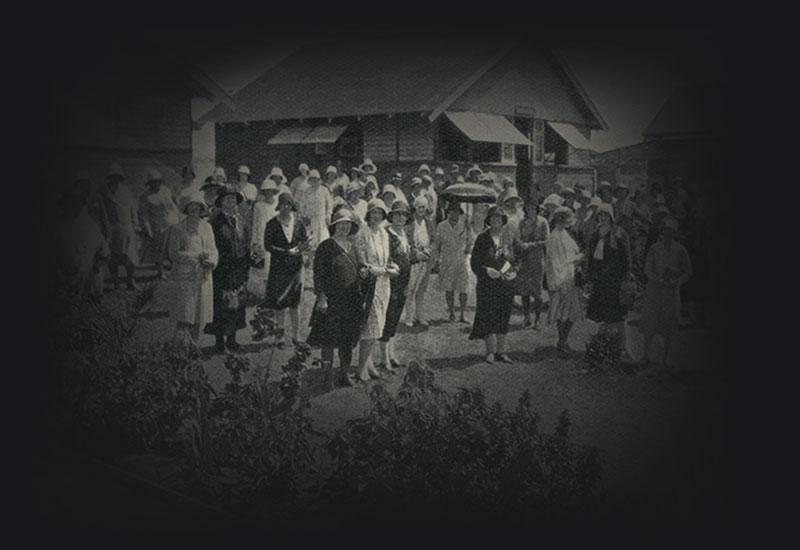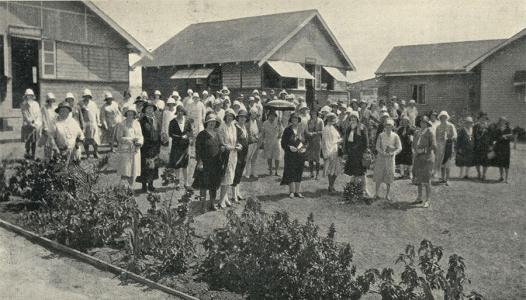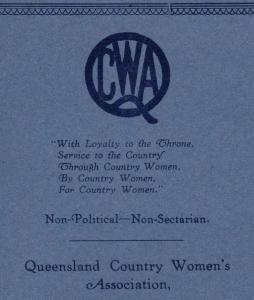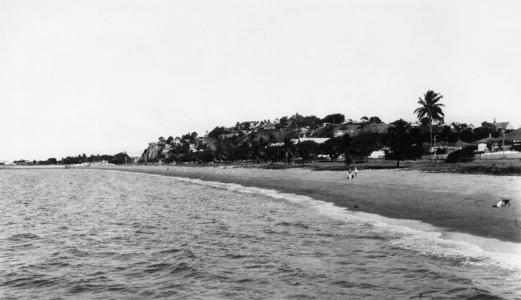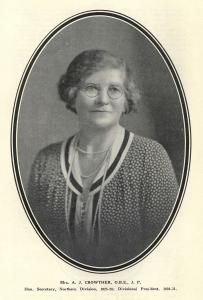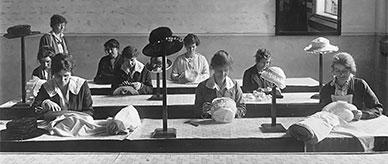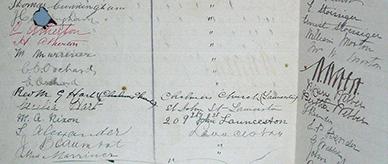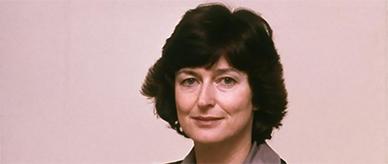In January 1933, a 38-year-old shearer’s cook, Stanley Locksley, travelled from the remote Queensland town of Hughenden to Townsville. He was accompanied by his employer, Mr Charles Planta, and the Planta family.
Hundreds of kilometres inland from Townsville, Hughenden was a challenging place to live, particularly during the summer months when daytime temperatures rarely dropped below 35 degrees. A trip to the beach would have provided much needed respite for Locksley and the Planta family.
On 4 January, Locksley and 16-year-old Frederick Planta went swimming at the Strand beach. Sitting in the shallows, Planta saw a terrifying shadow rapidly making its way towards the shore. He called to Locksley, but it was too late – there was already blood in the water around the kneeling man.
An ambulance was called and attempts made to save Locksley’s life, but sadly they were in vain. Newspapers would later report that a shark had bitten Locksley almost in half.
A call to action
Some Townsville residents attempted to catch the shark, believing it may have been responsible for eating a dog around the same time. But the local Country Women’s Association took a more practical approach.
Founded in 1922, the Queensland Country Women’s Association (QCWA) thought access to the seaside was important to the wellbeing of families in rural Queensland. In 1923 they started providing railway concession tickets to members and raising money to build seaside huts. Over the following decade they would acquire numerous seaside homes, including a group across from the Strand.
Ethel Crowther OBE was a foundation worker and president of the Northern Division of the QCWA. For her, the shark attack in Townsville was a call to action.
In a 1933 letter to the Prime Minister’s wife, Enid Lyons, Crowther detailed the work being done to construct a shark-proof enclosure on the Strand beach. The project drew on £100 (approximately $10,000 today) of QCWA funds raised through refreshment booths at public events and hosting a luncheon. The local community also pitched in by providing labour and transporting materials.
The project as one of the biggest they had undertaken. But to the QCWA it was imperative that people visiting the beach – especially those from rural areas – could enjoy the water safely, even those unable to afford entry to public baths.
The shark-proof enclosure was referred to as a ‘crowning glory of a great achievement’ and, despite Ethel's protestations, was named the Ethel Crowther Bathing Enclosure.
The QCWA maintained the enclosure for several decades until it was replaced with new solutions for shark-proof bathing including the rock pool: a saltwater pool on the Strand that was completed in 1968.
The CWA still offers holiday apartments for rent on the Strand, as well as many other coastal locations around the country.
A tremendous factor for good
Today we associate the Country Women’s Association mostly with handicrafts and baked goods. However, numerous records in the National Archives’ collection highlight the enormous role the CWA has played as advocates and allies of Australian women and children.
Ethel Crowther’s tenure with the QCWA took place during a time of extreme economic and social hardship, including recovery from World War I, the Great Depression and World War II.
A 1931 QCWA Annual Report shows the breadth of work undertaken by the state’s 13,000 members. They provided clothing and food to families in need, raised funds for the construction and maintenance of public facilities such as swimming pools and playgrounds, facilitated and supported infant welfare programs, and maintained public rest rooms in rural towns – vital at a time when women and children were not welcome in the front bars of pubs and hotels.
The CWA also petitioned the government on various issues, supported many causes and hosted official government visitors to regional areas. For nearly a century, Country Women’s Associations have been working away in the background to improve the lives of themselves and others.

